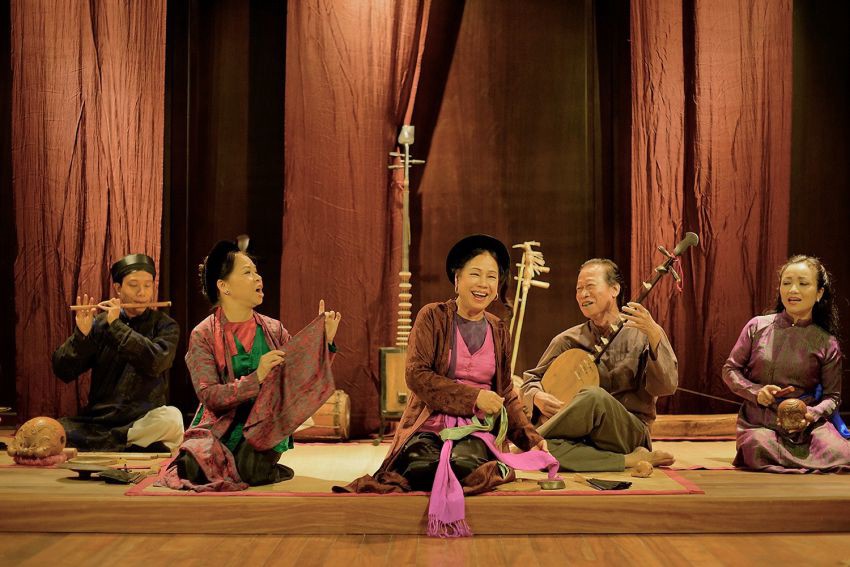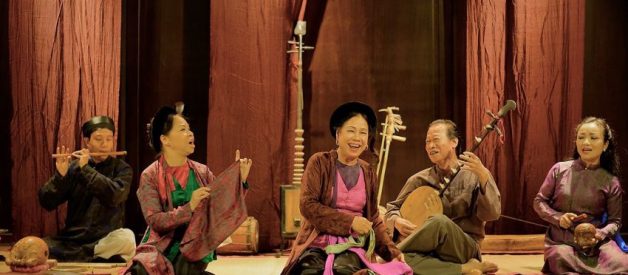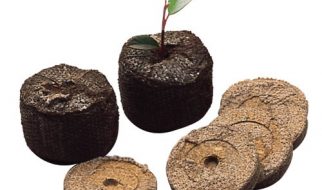
Vietnam boasts a rich musical tradition that goes back to our beginnings. Some of the world?s oldest still performed genres of music can be found here, and no trip to Vietnam is complete without attending some kind of traditional performance. However, Vietnamese music is also very diverse, and there are certain genres that are played in certain situations ? not everything is necessarily performed on a stage, and many of the most interesting and authentic genres are often performed at informal situations. As well, there are performances that are sorta the musical equivalent of tourists scams: music made to sound pretty, but doesn?t follow any authentic Vietnamese music form, often with synths, western instruments, and western music theory applied. There is nothing wrong with western influence, but to go to Vietnam as a tourist and primarily go to those, kinda beats the whole point of going to Vietnam. But more on that later. Here is a general guide for Vietnamese music and dance traditions.
First, what even is Vietnamese music? Well, for a general idea, Vietnam hosts a syncretic musical tradition, that combines native influences with Chinese, Indian, and Southeast Asian influences. Although Vietnam is often discussed academically as primarily being in the Sinosphere (the Chinese sphere of influence. ?East Asia?), that encourages a narrow view about Vietnamese culture and arts in general. Indeed, Vietnamese music includes more than the Chinese-based forms popular among the high class. Although these were modified or purged in the Nguy?n Dynasty (circa 1800’s), elements of tribal, Khmer, Indian, and Lao/Thai influence remains. Especially in the music theory, and musical context. Although it?s easier to just pretend everything in Vietnam comes from China, the reality is much more complex when you look at the history. Many instruments, genres, and songs have been lost to time, due to the Nguy?n Dynasty, French Colonisation, and the Vietnam war. Today, we?re still stuck in a ?horned-helmet viking? stage of our image on old Vietnam. However, many folk genres are experiencing revival, and some have preserved elements of other traditional genres that have been lost to time. One can hope that in the future, more interest in our non-Chinese influences will rise, as more research is done to accurately reconstruct old Vietnamese folk arts. And the internet also plays a role in helping, as there are now youtube channels dedicated to filming certain musical situations and celebrations. From shamanism rituals to funerals, there are youtube channels dedicated to filming these, and the music played gets a big focus. Often, the only audio from the video is recorded from the mic?ed instruments. The use of microphones has also helped expand the use of some instruments, so that they may be used in ensembles, and still be heard. With that out of the way, here is the guide to Vietnamese traditional music, for tourists.
- Nh?c Dn T?c C?i Bin.
This is the form of music you?ll most likely hear if you just go to any generic Vietnamese thing. Like, it?s everywhere, and hard to miss. So what exactly is it? Nh?c dn t?c c?i bin is a modern genre of music made in the 1950?s by the Hanoi Conservatory of Music. It uses western music theory, western tunings, western notation and modified Vietnamese folk instruments. If you?re not into any of the spicier forms of Vietnamese music; especially the folk music, then this is a good enough genre for you. Even though it?s highly criticized by more conservative musicians, for what they feel is a watered down approach to tradition. However, there is nothing wrong with authentically enjoying the genre for what it is. However, don?t fall into the musical tourist scam, as I call it. You don?t need to attend a very expensive performance to hear this genre, as even street musicians play it. A smart traveler should know that in general, big stage performances for folk music is kind of a waste of money. The true experience is seeing it played the way the folk actually play it; it?s called folk music for a reason. Since this genre is literally everywhere, I?m not big on this genre personally, but I?ll still link an example.
2. Traditional Folk Singing: Ht Xoan and Quan H?
Let?s say you don?t want something ultra-modern. Let?s say you want to go back to the origin of Vietnam, and what the music may have sounded like. For that, I would recommend Ht Xoan and Quan H?. Unlike the majority of commonly played Vietnamese folk genres, these are not derived from China. No one knows who invented it, but both share common origins with the singing traditions of many of the peoples who live in the area of Northern Vietnam, Guangxi, and Yunnan. Hat Xoan is a type of singing genre that consists of ritual music. It is performed as the ritual music for the Hung Kings: The semi-legendary kings who started the first kingdom that would become Vietnam. Quan H? is a call-and-response type genre that features alternating groups of male and female singers. Often, these are performed for courtship rituals. Although in modern times, Quan H? is often accompanied by instruments, the true Quan H? is sung without instruments. These forms of music are best experienced in the North, where they originated and are primarily performed. Note: I could not find a Quan Ho video that lacks instruments and keyboards, so if you?re looking for an authentic experience with Quan Ho, that may be hard to find. As well, I don?t know if there are any events that serve tourists, that have Xoan singing. Xoan singing might be something you?ll have to experience with a Vietnamese friend who knows the local folk culture well. In lack of the Quan Ho music, I will link the next best thing: Zhuang folk singing. The Zhuang people in China and Northern Vietnam (where they?re called the Tay and Nung) lived in close proximity with the Vietnamese people, and both have exerted mutual influence on eachother. Both Quan Ho and Hat Xoan are recognised as intangible human heritage by UNESCO.
3. Northern Folk Genres: Ca Tr, Ht X?m, and ?ng Kinh C? Nh?c
Let?s say you actually want instruments. You could go for the cheesy keyboards on modern Quan Ho songs, or if you?re in Hanoi, you can experience these 3 historical genres. First is Ca Tru. Ca Tru is a genre often associated with the higher class of Hanoi, and is a form of story-telling and singing. There is a theory it originated from Korean Pansori. However, the delivery and the music itself is much more similar to Quan Ho and Xoan. It mainly used the ?n ?y, a 3 stringed lute with an uncertain origin. There are theories of Chinese origin, as well as theories that it shares a common ancestor with the ?n Tnh, an instrument of the Zhuang, Tay and Nung people, used in a similar style of worship music called ?Ht Then?. Although this is just a personal opinion, old depictions of the instrument in sculpture personally remind me of the Chapey Dong Veng from Cambodia. The next two genres, Hat Xam and Dong Kinh Co Nhac, have a lot of overlap. Dong Kinh Co Nhac is a general term for folk music played in Hanoi (which used to be called Dong Kinh), which includes Hat Xam. Hat Xam is a type of peasants? music, often played on a ?n C (traditional fiddle) and ?n b?u (one stringed zither played exclusively on natural harmonics). Often, Hat Xam was heard in Hanoi?s streetcars, until they were discontinued.
4. Southern Folk Genres: Nh?c Ti T?
Let?s say you go to Southern Vietnam. There won?t be Ca Tru or Hat Xam for miles. Enter Nh?c Ti T?. Nhac Tai Tu is a form of chamber music, often with modified western instruments introduced during French Colonisation. This is the music characteristic of Saigon and the Mekong delta. This genre is one of the spicier forms of Vietnamese music. Frets on Viet string instruments tend to be really high so the notes can be bent. Because of this, they modify the fretboards of western acoustic and electric guitars to have scalloped fretting, so the vibrato can be achieved. The music expresses a degree of heterophony, comparable to that of Thai and Khmer traditional music, from which it received some influence from. The Mekong delta was formerly the southern part of Cambodia. The Cambodians who remain are known as ?Khmer Krom? and the region is known in Khmer as ?Kampuchea Krom?. Although the instrumentation is derived from China and France, elements of the local Khmer folk culture have influenced the way this genre is played and written. Essentially, it?s the opposite of Nhac Dan Toc Cai Bien. Rather than Vietnamese instruments modified for western tastes, western instruments are modified to fit an extreme form of Vietnamese music theory. A very famous Nhac Tai Tu melody, known as V?ng C?, is used as the main melody for C?i L??ng, which is southern spoken folk theatre. This music can also be heard pretty much anywhere in the Mekong Delta region and Saigon. It?s often performed in very informal situations and even though there are big stage performances, it?s one of those forms of music that are best experienced informally.
5. Court Music and the ritual music of Central Vietnam
So let?s say you?re wanting a more, traditional experience, so you go to central Vietnam. Actually kind of a mistake, since all of the oldest stuff in Vietnam (that?s Vietnamese) is in the north. Ok, scratch that. You go to Hue, and you want the Nguyen Dynasty experience. Well the traditional genres of music played in Hue greatly overlap with eachother, and there are various terms used to describe different ways of playing the same songs: Ca Hu?, Nh Nh?c, and Nh?c l?. Nha Nhac is the basis for the other two. It has it?s origins in the L Dynasty, and has its origin in Buddhist Ritual music, similar to that of Tibetan Ritual music, with the prominent use of the Kn, an oboe with a loud, trumpet-like sound. However, in the Nguy?n Dynasty, one of the people involved with the royal court orchestra wanted to copy the traditional ritual music of China, while another wanted to keep the old Le Dynasty music alive. A compromise was made, and the old songs, reserved for the strictest of traditions, became ?Dai Nhac? (large music) and the Chinese songs became ?Tieu Nhac? (small music). Nhac Le is mainly a form of ritual music, and is often just local variations of Nha Nhac pieces. It and Dai Nhac are where we start getting into really underrated and underappreciated territory. Consequently, Ca Hue and Tieu Nhac are much more promoted to tourists, because it primarily uses string instruments with the Sao Truc flute. Nha Nhac is best experienced at any of the palaces in Hue, where it?s still often performed. Ca Hue is best observed in an informal setting, and Nhac Le is performed in Buddhist Rituals. Similar music is played by the Muong (the closest linguistic relatives of the Vietnamese) and the ethnic minorities in the north.
Tieu Nhac music. This music is also often performed during festival processions.A Dai Nhac piece.A Nhac Le performance. This piece is actually mostly associated with the Tieu Nhac repertoire, and is often played during festivals. However, like I said, these genres overlap and are really just different ways of playing the same songs.A Ca Hue performance (labeled as Nha Nhac on youtube, evidence of the overlap). Ca Hue has more influence from Chinese folk music, and stylistically resembles Southern Chinese Music, and to an extent, the forms of Chinese music played by the ethnic minorities.
6. Ht Ch?u V?n and the centuries old shamanism tradition.
Vietnamese Shamanism, known as Ln ??ng, is Vietnam?s oldest religious tradition. It?s based around the ??o M?u faith, which venerates mother goddesses, and is animistic. It?s also syncretic with Buddhism, Taoism, and tribal religions. Deities from China, India, Cambodia, the Hmong, the Tay-Nung-Zhuang, and Champa are often incorperated. It combines music, known as Hat Chau Van, with dance, as Shamans will dance to go into a trance. This genre has become a safe-haven for some lesser known instruments that were almost extinct at one point. Hat Chau Van is traditional poetry set alongside to music. It?s a unique expression of the Vietnamese people, being developed in syncreticism with Chinese, Khmer, Tribal and Folk styles. Although in the past, Hat Chau Van was normally just a Dan Nguyet (moon-shaped guitar), a Sao (flute), and a small drum kit, today, it has expanded to include more instruments. Some of the lesser appreciated instruments used in it are the Ken; the oboe mentioned earlier, the Sao Meo and the Sao Bau; Free reed pipes akin to the Bawu and Hulusi played by ethnic minorities such as the Hmong and Tai, and the leaf-whistle. The costumes also combines aspect of clothing from all parts of Vietnamese history. Sometimes, the Shaman wears a Nguyen Dynasty Ao Dai. Other times, they?ll wear an Ao Tu Than with neck rings and a head scarf, like ethnic minorities currently do, and how people dressed in Pre-Nguyen Vietnam. Also, uniquely, male shamans can take on female roles, as well as female shamans taking male roles. If you want to experience traditional Vietnamese dance, authentically, I do recommend attending a Vietnamese Shamanism performance if you are accepting of the traditional faith. Despite the ritualistic performance, the atmosphere is often quite laid back. An online community has formed around the filming and uploading of the rituals, and a huge focus is put on the music. There are even famous Hat Van singers, such as ?Thanh Long?. It?s one of the few genres being primarily preserved by the community, and not an organisation.
7. Traditional Theatre and Opera
Finally, the last stop on our journey through Vietnam?s musical tradition, let?s say you want to see traditional dance, but in a more secular context. Well sadly, most traditional Vietnamese dance has been highly modified, using synthesised music and westernised costumes, as well as unnecessary flashing lights. If you?re just looking for some kind of entertainment, that?s fine. But if you want an authentic experience, try the traditional theatre styles: Ht Tu?ng and Ht Cho. Hat Tuong is often regarded as the equivalent to Chinese Opera. However, it?s more than that. In olden times, people enjoyed Chinese Opera, Khmer Ballet, and Siamese (Thai) theatre, often performed by travelling tropes. Over time, local forms of Chinese opera became combined with local indigenous influences, as well as Khmer and Siamese costumes and dance styles becoming influential to the performance of Hat Tuong. I would honestly describe Hat Tuong costumes as a cross between Chinese and Khmer-Thai styles. Oftentimes, you have Ming Dynasty Hanfu with the long flapped Wushamao hat. However, sometimes, costumes will have collar decorations and even shoulder decorations, and crowns, similar to Thai and Khmer costumes. Usually a lot of costumes fall in between, but generally lean more toward Chinese influence. Hat Cheo is a folk opera performed primarily in the North. It?s influenced by Tuong, but rather than telling tales of mythology and the aristocracy, it tells the daily lives of people. The singing is highly influenced by indigenous singing styles, and the instrumentation can vary.Both forms of theatre are best observed in the most traditional setting: outdoors with an acoustic ensemble. However, this may not be feasible. However, still try to find outdoor performances, if you can.
A Hat Tuong performance.Hat Cheo is often associated with the north.
Bonus: Music of the Cham and Khmer Krom.
Although these are seperate topics on their own, they?re an honorable mention. The music of the Cham and Khmer have their own seperate origins that combine Indigenous, Indian and Chinese influences. The music of the Khmer Krom has adapted local Vietnamese influences, and has influenced the folk music of Southern Vietnam.
Music and dance of the Khmer Krom from the Mekong DeltaMusic of the Cham


